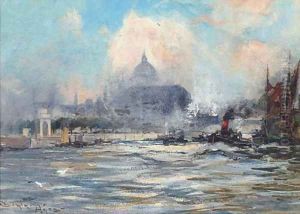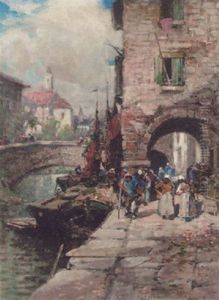Frederick John Bartram Hiles Paintings
Frederick John Bartram Hiles was an English artist, born in 1902, whose work spanned several decades of the 20th century, reflecting the changing dynamics and aesthetics of British art. His life and career were marked by both his prolific output and his ability to adapt to various styles and mediums, ranging from painting and drawing to printmaking.
Hiles attended the Royal College of Art in London, where he was influenced by the prevailing trends of his time, including Impressionism and later, Modernism. His early work was characterized by a keen observation of light and color, often focusing on landscapes, seascapes, and urban scenes. His ability to capture the essence of his subjects with a delicate touch and vibrant palette won him early recognition.
Throughout his career, Hiles exhibited in numerous galleries and exhibitions, both in the United Kingdom and internationally. Despite the acclaim, he often shunned the spotlight, preferring the solitude of his studio to the public eye. His work during the mid-20th century began to reflect the tumultuous times, with a notable shift towards more abstract and expressionistic styles. This period saw him experimenting with form and technique, pushing the boundaries of his art to reflect the emotional and social upheavals of the era.
In addition to his painting, Hiles was a respected teacher, imparting his knowledge and passion for art to a new generation of artists. He believed strongly in the power of art to communicate beyond words, a philosophy that underpinned both his teaching and his own practice.
Frederick John Bartram Hiles passed away in 1985, leaving behind a legacy of artistic innovation and a body of work that continues to be celebrated for its depth, beauty, and emotional resonance. His contributions to British art are remembered for their reflection of the 20th century's complexities, rendered with a sensitivity and skill that remain influential.

